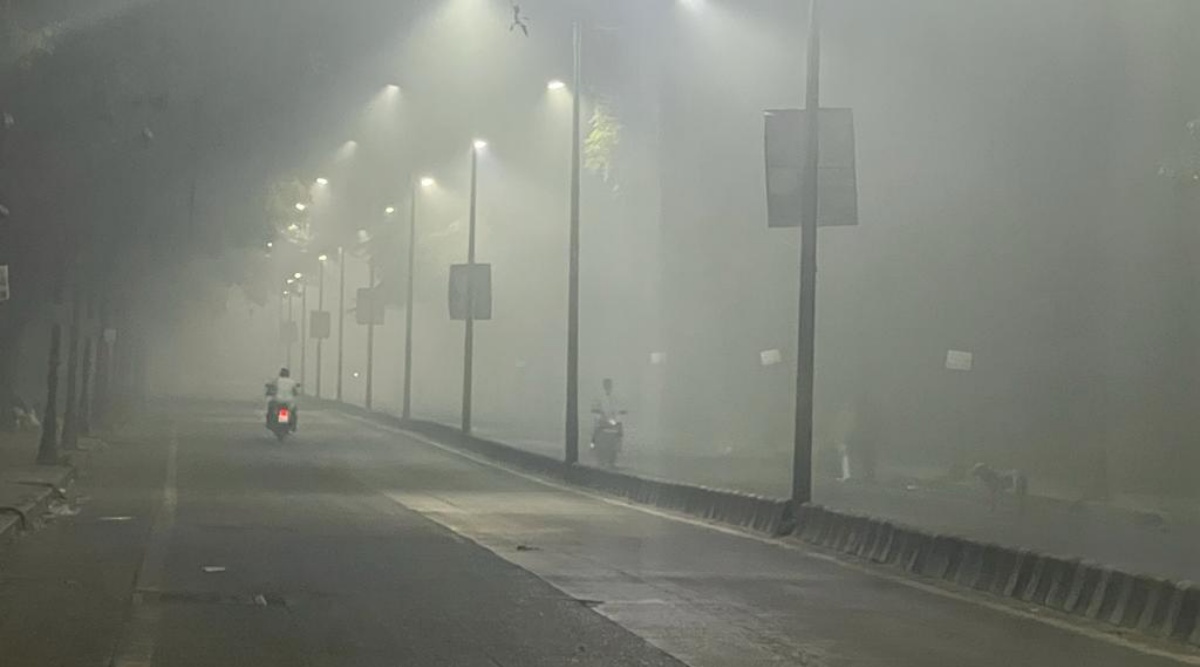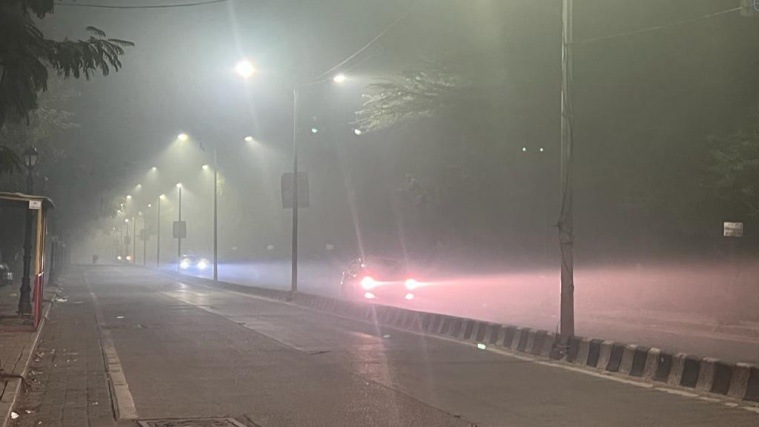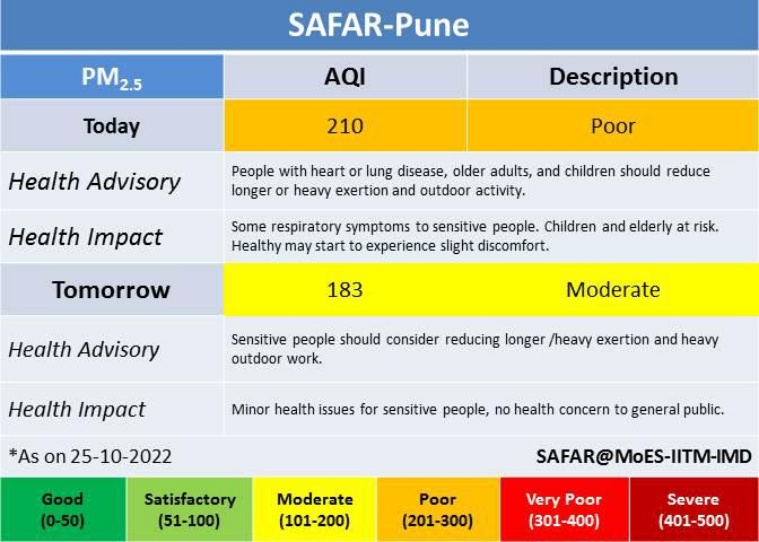 Smog on Wanawadi road in Pune by 2.50 AM on Tuesday morning after Diwali. (Express photograph by Arul Horizon)
Smog on Wanawadi road in Pune by 2.50 AM on Tuesday morning after Diwali. (Express photograph by Arul Horizon)The bursting of firecrackers to celebrate Diwali on Monday, on the occasion of Laxmi Puja, resulted in an 8 to 10 per cent rise in noise levels as compared to last year in Pune, the Maharashtra Pollution Control Board (MPCB) said. A day later, it also resulted in the air quality in Pune worsening and dropping from the ‘moderate’ to ‘poor’ category.
Pratap Jagtap, sub regional officer at MPCB-Pune, told The Indian Express that the maximum sound level recorded during the day was 87.7 decibels (dBA) at Laxmi Road. Four areas at Swargate, Aundh, Pune Satara Road and Sarasbaug also recorded over 85 dBA. The levels ranged between 68-76 decibels from 10 pm to 6 am. Last year, the maximum levels were more than 75-77 dBA.
 According to the advisory for Tuesday, people with heart or lung disease, older adults and children should reduce longer or heavy exertion and outdoor duty. (Express photo by Arul Horizon)
According to the advisory for Tuesday, people with heart or lung disease, older adults and children should reduce longer or heavy exertion and outdoor duty. (Express photo by Arul Horizon) The permissible sound limits are 65 dBA and 55 dBA in commercial areas, during day and night, respectively. In residential areas, the levels are 55 dBA and 45 dBA, during day and night, respectively.
Celebrations were muted in the last two-and-a-half years owing to the Covid pandemic, MPCB officials said. On the contrary, sound levels at Ganesh Chaturthi celebrations this year were higher than the last two years, officials added. The pollution control body said it noted a similar trend for Diwali this year.

Air quality ‘poor’ on Tuesday, to improve on Wednesday: SAFAR
Post-Diwali, the air quality in Pune has worsened, dropping from ‘moderate’ to ‘poor’ category on Tuesday, according to scientists from the System of Air Quality and Weather Forecasting And Research (SAFAR).
While the air quality index (AQI) on Tuesday was 210, it is likely to improve to 183, which is in the ‘moderate’ category, on Wednesday as per the forecast, Dr Gufran Beig, founder project director of SAFAR, said.
Pune-based scientists with SAFAR have used mathematical models and evaluated air quality exposure guidelines to design the AQI. Pollutants that are monitored include PM 2.5, PM 10, Ozone, NOX, and CO among others.
The AQI scale is designed to help understand air quality and its impact on one’s health. The AQI is classified into six categories, including good, satisfactory, moderately polluted, poor, very poor and severe. It transforms complex air quality data of various pollutants into a single number or index value.
According to the advisory for Tuesday, people with heart or lung disease, older adults and children should reduce longer or heavy exertion and outdoor duty.
Dr Beig pointed out that prolonged heavy rains have helped reduce overall pollution levels.